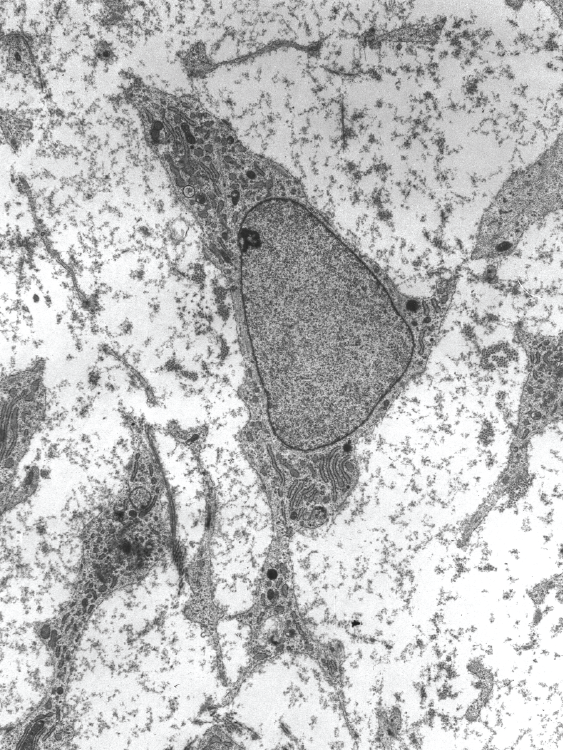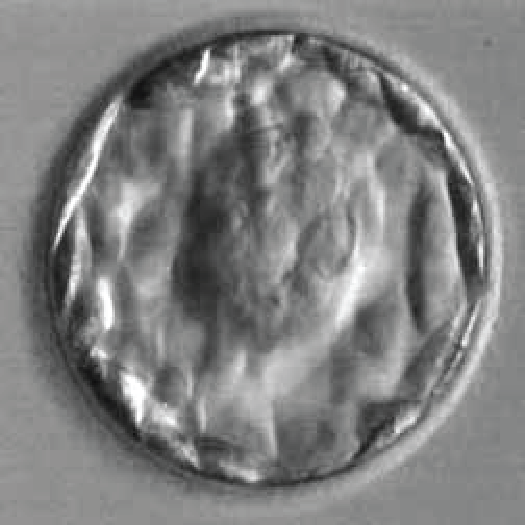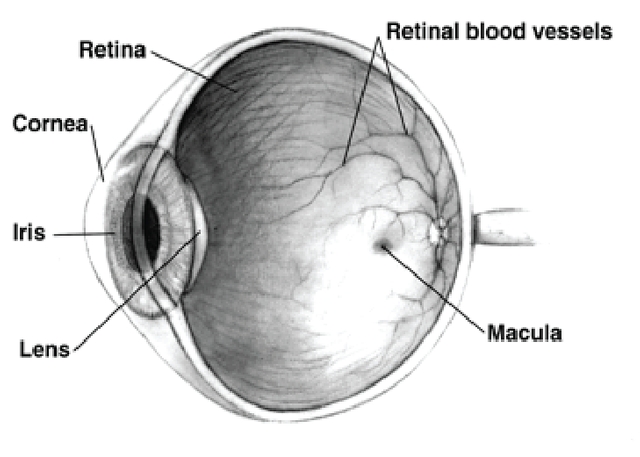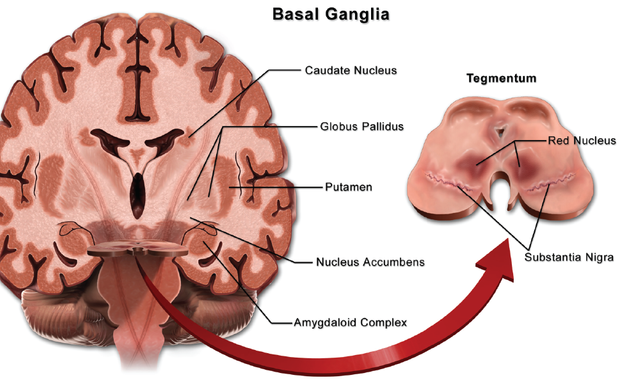Science Lesson: Stem Cells (Promising Research and Medicinal Potential)
Preface
In continuing with the trend of discussing prominent and potentially groundbreaking topics in biology that have applications that already effect or might have a future impact on each of our lives, today I have chosen to write about stem cells. As I prefer to focus on the science itself and steer clear of the more controversial aspects of a topic (as they often detract from our understanding of the core aspects of the topic), I will be focusing predominantly on applications of “adult” stem cells. That said, I will provide a background level of information for both varieties and explain why researchers historically have found embryonic stem cells such an attractive research candidate.
Figure 1: A Stem Cell
What is a Stem Cell?
When we think about cells in our bodies, we generally think about specialized cells, which exist in specific locations, have specific properties (skin cells are only found as parts of our skin, liver cells are only in the liver, etc.) and perform a defined function. Stem cells are those which have not yet been specialized, they are “unspecialized,” and can, under the right conditions, become a specialized cell. Stem cells are in fact found in many different tissue types in each of our bodies. These cells have the unique ability to divide repeatedly and each time a cellular division happens the newly created cell can remain a stem cell or specialize into a different type of cell. As a result the stem cells located throughout the various tissues of the body can actually act as a repair system. In the event that a tissue gets damaged, the stem cells that reside there can rapidly divide and produce new tissue specific cells to quickly replace those that were damaged/not functioning correctly. Scientists work on two classes of stem cells: embryonic and somatic (aka “adult”). Let’s briefly discuss both types.
Embryonic Stem Cells
Embryonic stem cells are those derived from blastocysts (blastocysts are the lump of cells that forms after fertilization of a mammalian egg by a sperm, prior to implantation and growth into a full embryo).
Figure 2: A Blastocyst
Embryonic stem cells are unique in that they are pluripotent, this means that they can become any other class of cell in the body. Additionally embryonic stem cells have an indefinite lifespan, and all cells obtained from their division maintain pluripotency (1). These two aspects are what make these cells such interesting targets for research. Unfortunately, the source from which they are obtained is shrouded with a significant number of moral and ethical questions.
Somatic Stem Cells
Earlier when I talked about the stem cells that exist throughout various tissues in each of our bodies that can aide in the repair of those tissues, I was talking about somatic stem cells (aka “adult” stem cells). We have known about these cells for quite a long time, in fact the first time the term “stem cell” was used in a publication was by Arthur Pappenheim in the early 1900’s. (2) In the mid 1950’s people came to realize that a single type of stem cell found in our bone marrow, regulates the production of all of our various types of blood cells, and it was the study of this system that lead to the construction of the ideas of tissue regeneration, as it was being found that other tissues were being maintained in a similar way to bone marrow and the production of blood cells.(2) Somatic stem cells, unlike their embryonic counterparts are not pluripotent by nature and they cannot become any type of cell. They are referred to as multipotent as they can become multiple different cell types (eg bone marrow stem cells can become blood cells, neurons and skeletal muscle, but not every tissue in the body). It is interesting to note that while embryonic stem cells have a defined source (a blastocyst) it is not currently known where somatic stem cells, in any tissue, come from.
Induced Pluripotency
Having faced the fact that somatic stem cells are much less useful then the pluripotent embryonic variety, people asked couldn’t we use genetic manipulation and artificially express the proteins found in embryonic stem cells in somatic stem cells and induce a pluripotent state? Essentially researchers wanted to make GMO stem cells (the techniques used to do this sort of thing were discussed previously in Science Lesson: Genetically Modified Organisms). Well, researchers rushed to their lab benches and the first human induced pluripotent stem cells were reported in 2007.(3). While this technology was originally proposed to further along regenerative medicine and allow for better stem cell therapies, that is not all that has come from it. Induced pluripotent cells have allowed for significant advancements in modeling human diseases, as well as for screening drugs against specific tissue types to monitor effects. Researchers have turned these induced pluripotent cells into an unlimited supply of previously inaccessible human tissues for research.(4)
Current and Future Conditions Treated With Stem Cells
I bet you are already very familiar with a stem cell transplantation technique, that is used to treat over 35,000 patients world-wide each year.(5) The bone marrow transplant, is actually a stem cell transplantation technique (remember how we discussed that the first stem cells identified were those from bone marrow). Today bone marrow transplants are used to treat Leukemia (cancer), immune deficiency disorders, certain other cancers with solid tumors, and aplastic anemia.
However bone marrow transplants are not the only stem cell therapy used/in the works: In 2014 in Japan a trial began attempting to use the previously mentioned induced pluripotent stem cells to treat patients with a degenerative eye disease called macular degeneration. (6) In this disease the center portion of the retina (the macula, Figure 3) degrades resulting in a loss of vision starting at the center of your field of vision and expanding outward as the retina degrades. The stem cell therapy intends to re-grow these damaged retinal areas. Unfortunately after a successful transplant in the first patient this trial has currently been stopped due to genomics issue with the second patient and is being re-setup.
Figure 3: The Eye
It would appear that the future the potential for stem cell related therapies is bright, as they have the ability to re-generate specific cells in the body they could be used to treat diseases like type-2 diabetes (where pancreatic beta-cells stop producing insulin) or Parkinson’s (caused by a deterioration of neurons in an area of the brain called the Substantia nigra (Figure 4), these neurons are responsible for producing dopamine).
Figure 4: Where is That Substantia Nigra Anyway?
Anywhere you have a disease caused by a malfunctioning cell type, you have a potential application for these extremely versatile cells.
Unreproducible Results and A Bit of Fraud
It is a fact that there have been many instances of unreproducible stem cell research publications. It was shown that of highly cited clinical research studies (those cited more than 1000 times in between 1990 and 2003) only 44% were able to be replicated with similar results.(7) However as the article points out, this is not actually due to fraud (fabrication or manipulation of data). Many of the results may have been false positives or false negatives due to poor experimental design and that lead to their irreproducibility. That is not always the case though, in 2004 a Korean researcher Hwang Woo-suk claimed to have generated human embryonic stem cell lines from human eggs which were never fertilized (no fertilization, no embryo, no embryo…significantly less controversy). Hwang and his colleagues actually published two papers on the subject, one detailing their initial finding and a second paper reporting improved efficiency. Scientists quickly drew the results into question and by 2005 the author admitted to faking the data and the papers were retracted.(7)
Concluding Remarks
Embryonic stem cells were long touted as the source for a wide variety of cures to human diseases, however the controversy surrounding how they are derived has forced scientists to look elsewhere for the means to achieve these cures. This has led to the development of a wide variety of techniques to coax somatic stem cells into a more malleable state. Progress has been slow but the potential rewards are still widely regarded as within reach. If the past is any indicator of the future, the path will be filled with hurdles, and the prospects of fame and fortune may lead to more fraudulent publications. Nevertheless, it will be fascinating to watch the future progress of the variety of research and clinical projects related to stem cell technology. One of those projects someday might treat you or a loved one. Speaking from the perspective of someone with a familial history of type 2 diabetes, the prospect of a cure is a welcome one. I hope you have concluded your reading of this blog with a little bit better an understanding of what a stem cell is, and what the potential benefits this research has for human health.
Works Cited
- http://www.annualreviews.org/doi/pdf/10.1146/annurev-cellbio-100913-013116
- http://www.nature.com/nrm/journal/v16/n5/pdf/nrm3980.pdf
- http://www.cell.com/abstract/S0092-8674(07)01471-7
- http://www.nature.com/news/how-ips-cells-changed-the-world-1.20079
- http://www.nature.com/bmt/journal/v48/n9/full/bmt201351a.html
- http://www.nature.com/news/next-generation-stem-cells-cleared-for-human-trial-1.15897
- http://www.ncbi.nlm.nih.gov/pmc/articles/PMC2626656/
If you like my work, please consider giving me a follow:
If you would like to donate directly, please utilize the great new steempay service!

Thank you for your support of my work!




A nice overview of a topic which is unfortunately more commonly known for the controversy than the science.
Indeed and for this reason especially is why I wanted to focus on the work being done on somatic stem cells. There is a lot of work being done to leave the controversial aspects behind, but still reap the benefits of the technology.
Your knowledge of science is impressive. Most impressive
Nice post, and nice sources, upvoted
Thank you
You're welcome
I believe that stem cells are the future of medicine. I can see both sides of the debate on how we get these cells. Is it really right to end one life to further research? Will this research cute a disease? So many questions and moral choices.
Well sort of the point of this post was to illustrate that regardless of what people think about embryonic stem cells, there are promising therapies coming out of non embryonic stem cells (where there are really not any moral issues).
Love love this.
There is also another famous scandal in Japan. A lot of drama in there. The researcher got her phd revoked. her supervisor committed suicide. Pressure for biologists to be first, maybe? https://en.wikipedia.org/wiki/Haruko_Obokata
When your entire career is dictated by your ability to put out high impact publications, it sure puts a ton of pressure on the researchers to perform at an extremely high level. I never heard about Haruko, will have to look more into her story, sounds like its a sad one.
I love how you made it very easy to read! Love the topics you write about.
Thank you! I try to keep the material digestable enough so that everyone can take a bit of knowledge home with them.